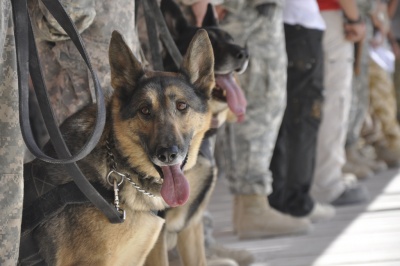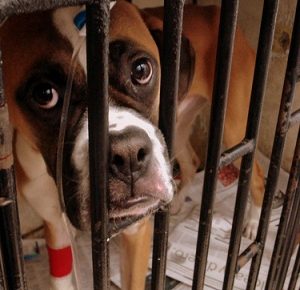 |
Dogs have been used in warfare since ancient times. In 628 BC, the Lydians deployed a battalion of fighting dogs and in 525 BC Cambyses II used huge fighting dogs against Egyptian spearmen and archers. The Romans trained dogs specifically for battle and equipped them with armor.
During the Medieval period, royalty gave each other gifts of dogs specifically bred for war. Frederick the Great used dogs as messengers during the Seven Years’ War with Russia. Henry VIII sent [[mastiff]s to Spain to aid them in war. Elizabeth I used 800 dogs to quell the Desmond Rebellions. During the Civil War,the American Pit Bull Terrier was used to send messages.
During World War I, dogs in the United States served as mascots and starred on recruiting posters. Sgt Stubby, an American Pit Bull Terrier mix was the most awarded dog of World War I and became the first dog to be given rank when he discovered and alerted the Allies to the presence of a German spy. European armies used dogs to pull carts loaded with supplies or wounded soldiers.
In World War II, the Soviet Union used dogs strapped with explosives to destroy invading German tanks. 549 dogs served in the U.S. army in the Pacific, and almost all went back to civilian life after the war. Many were adopted by their handlers.
During the Vietnam War, K9 units are estimated to have saved over 10,000 human lives. 232 military working dogs and 295 US servicemen working as dog handlers were killed in action during the war. The dogs were used to detect ambushes, weapon caches, or enemy fighters hiding underwater. They were used as sentries, guarding military bases from the Vietcong.
A Belgian Malinois war dog named Cairo was instrumental in capturing Osama Bin Laden. Controversially, the U.S. military used dogs to intimidate prisoners of war in Iraq and Afghanistan. This practice is now illegal.
There are currently about 530 dogs in the U.S. military. Due to pressure from animal welfare advocates, these dogs are no longer euthanized at the end of their service, but are instead adopted by citizens.
Related articles:


